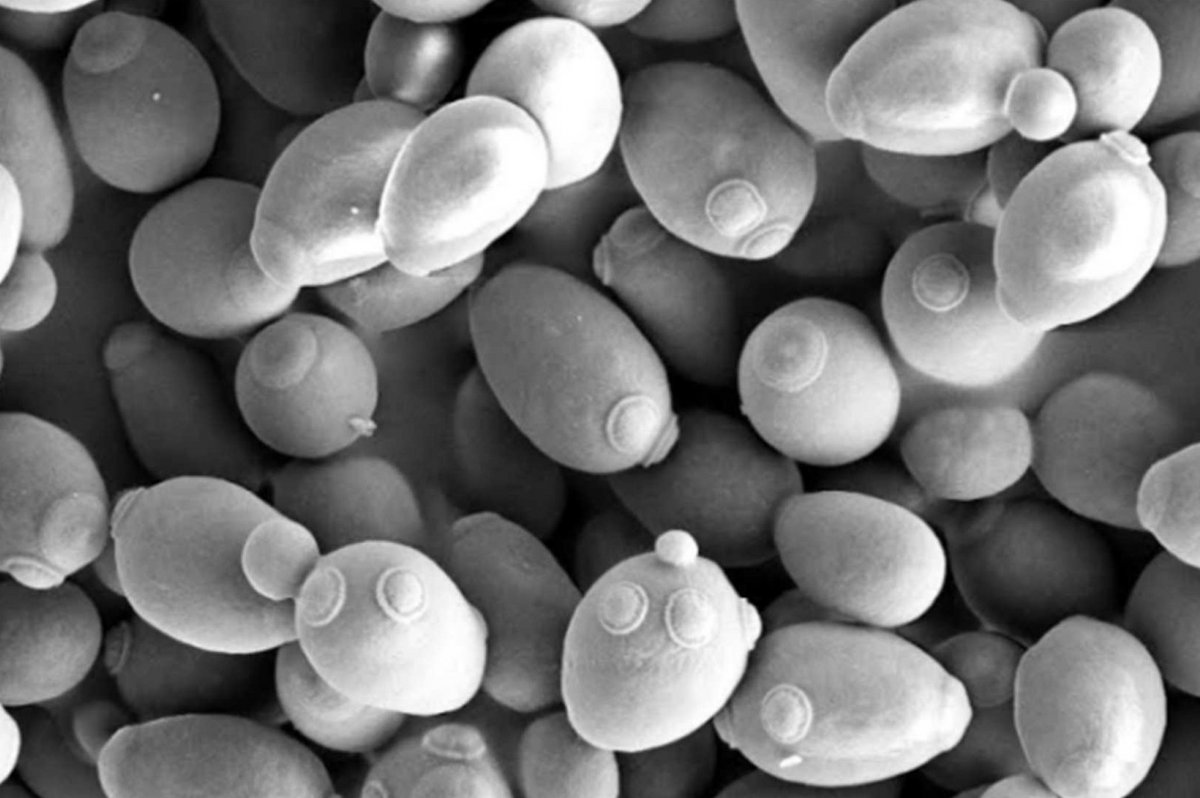Important breakthrough: New technology can convert surplus CO₂ into food
With huge support from both the Novo Nordisk Foundation and the Bill & Melinda Gates Foundation, researchers from Aarhus University can now test whether the technology will work on a larger scale, outside the laboratory.

The media are flooded with news, reports and warnings that we’re releasing far too much CO₂ into the atmosphere. Cars do it. Power stations do it. Industry does it. Aircraft do it. And agriculture does it.
But what if all that CO₂ didn’t go to waste? What if we could turn it into a valuable resource?
These are some of the thoughts behind the project that the two biggest foundations in the world – the Novo Nordisk Foundation and the Bill Gates Foundation – have decided to support with funding of DKK 200 million.
The project is based on a research breakthrough achieved recently by Lars Angenent, who is a professor of climate biotechnology at the University of Tübingen in Germany and a part-time professor at Aarhus University.
He managed to build a platform that can transform CO₂ from biogas into proteins that humans can eat. In the long term, the technology could even be linked up to power stations and factories that emit enormous amounts of CO₂. Unlike today, when CO₂ is simply released into the atmosphere, it will be transformed into food.
At least, that’s the idea, explains Lars Angenent.
"To start with, we're building a bioreactor in Foulum just outside Viborg. The reactor will tap biogas directly from the biogas plant out there. It will then transform it into edible protein. If it’s as effective as we hope, we’ll try to utilise excess CO₂ from other places, for example from industry," he says.

Micro-organisms do the hard work
It sounds almost like magic that science can transform an invisible gas into food for our dinner tables. But in fact it’s a rather simple biochemical process, explains Lars.
"We’re actually just utilising natural processes to convert CO₂ into something we can eat.
We’re using different microorganisms to do the work for us. First, bacteria eat the CO₂ and convert it into acetic acid. Then we get yeast to convert the acid into protein.
Even though the process is simple, it requires a lot of work to fine-tune it to make it as efficient as possible.”
If the protein produced in this way is to have a chance, it has to be cheaper than traditional food products, he explains.
“Naturally, it has to taste good if people are going to eat it. But it also has to be cheaper than the alternative. Few people want to buy something that tastes like meat, but isn’t and costs more. Even if we have to for the sake of the climate. So price is crucial.”
| How researchers convert CO₂ into protein |
|---|
To convert CO₂ into protein, the researchers have built a bioreactor with three stages. 1. The first stage is to procure the raw materials needed. The reactor needs CO₂, hydrogen and oxygen. The CO₂ will initially come from a biogas facility, while hydrogen and oxygen will be produced on site using green energy and electrolysis. When you send a current through water, it is split into hydrogen and oxygen. 2. In the second stage, hydrogen and CO₂ are pumped into a microbial reactor full of bacteria called acetogens. The bacteria live in an environment without oxygen, and they transform the hydrogen and CO₂ into acetic acid - just like the vinegar we use to descale a kettle. 3. In the third and last stage, the acetic acid is filtered out and pumped into a new reactor. The reactor contains a colony of yeast - just like the yeast we use to bake bread or brew beer. When it gets enough oxygen, the yeast transforms the acid into protein. The protein can then be processed into different foods, such as tofu. |
A bathtub full of bacteria
So far, Lars Angenent has only tested his bioreactor in the laboratory – and it works brilliantly. But as is so often the case with new research, the question is whether it will work in real life. And this is precisely what he’ll be investigating in the new project.
"We're going to build a 200-litre bioreactor at Foulum. That’s about the size of a bathtub. In the reactor, we’ll examine how efficient the process is at a slightly larger scale. And we need to see how we can make it even more efficient,” he says.
In parallel with the 200-litre reactor, there will be experiments to utilise CO₂ from other places than a biogas plant. For example from chimneys at power stations or factories.
Alfred Spormann, professor and head of the Novo Nordisk Foundation CO₂ Research Center (CORC) at Aarhus University, which is behind the new research project, explains further:
"To start with, we’re going to use biogas, but our ambition is to explore other sources of CO₂. It could be from cement production, power plants or factories that emit large amounts of CO₂ which we can capture and convert into food.”
| The world’s best CO₂ researchers at Aarhus University |
|---|
The Novo Nordisk Foundation CO₂ Research Center (CORC) opened in January 2022. The research centre is based at Aarhus University, and it aims to provide solutions to the massive challenge of too much CO₂ in the atmosphere. Together with researchers at a number of other universities in Denmark, the USA and Germany, CORC has particular focus on these five areas of research: ● New methods for capturing CO₂ from the atmosphere and sea surface CORC is financed by the Novo Nordisk Foundation, which has donated a huge grant of DKK 630 million over seven years to establish and run the centre. |
Won't make farmers unemployed
If, in the future, we succeed in creating a technology that captures and converts CO₂ from industry into edible proteins at large scale, this does not mean that we will no longer need food from the agricultural sector. On the contrary, Lars Angenent explains.
"The idea is to help make the agricultural sector far more sustainable. If we can produce large amounts of protein from CO₂, we can reduce animal production, which is the part of the agriculture that emits the most greenhouse gases.
We’ll still need masses of vegetables, but meat can, to a large extent, be replaced by the proteins produced from CO₂ using our technology.”
Livestock production – for example with cows, pigs and sheep – uses 80 per cent of all farmland globally. Only the remaining 20 percent is used to produce vegetables and other crops for human consumption.
So vast rural areas will become available if the new technology can make protein from CO₂ in the future. And the soil can instead be used to grow vegetables, re-establish wild nature and restore biodiversity.
"There’s a need for far more farmers to grow vegetables – even if we have to cultivate the land more sustainably and less efficiently. Having more land will mean we don't need to squeeze the earth to the utmost to get the highest possible yields," he says.

Can be ready in two years
Even though the researchers from Aarhus University are initially building and testing bioreactors to convert biogas into edible protein, after just two years they may have gathered enough knowledge to build large protein-producing factories. This is what Alfred Sporman thinks.
"Our expectation is that we will have collected sufficient knowledge to design and construct a demonstration site in just two years. And we’ll most likely build it in Denmark.”
The system will function as a kind of plug-in to a CO₂-emitting factory. A system linked to the factory's existing production line.
"Because the plants can be installed in the factories' current systems, it’ll be possible to build many of them quite quickly once we have a prototype that works efficiently. In this way, the technology can quickly get out and make a big difference. And that's good, because the green transition is urgent," he concludes.
| The research behind the project |
|---|
The project is basically based on two research articles. In 2019 Lars Angenent published his results in the journal Energy and Environmental Science. He demonstrated for the first time that this technology makes it possible to convert CO₂ into edible proteins. Read the article here: In the following year, he published an article in the journal Joule, in which he could demonstrate how efficient his technology was compared with other methods. Read the article here: The funding for the project comes from the Novo Nordisk Foundation and Bill & Melinda Gates Foundation. All of the money isn't going to Aarhus University though. They are given to a consortium of corporations and universities. Part of the research is happening at Novozymes A/S, Topsøe A/S and at Washinton University in St. Louis. |
Contact info
Alfred Michael Spormann
Founding director og professor
The Novo Nordisk Foundation CO₂ Research Center, Aarhus Universitet
Mail: aspormann@corc.au.dk
Phone: +45 93 52 25 79
Lars Angenent
Professor
University of Tübingen og Aarhus Universitet
Mail: l.angenent@uni-tuebingen.de
Phone: (49)(0) 7071 29 74729
Tina Fruelund
Director of Communication
The Novo Nordisk Foundation CO₂ Research Center
Mail: fruelund@corc.au.dk
Phone: +45 29 21 96 32
